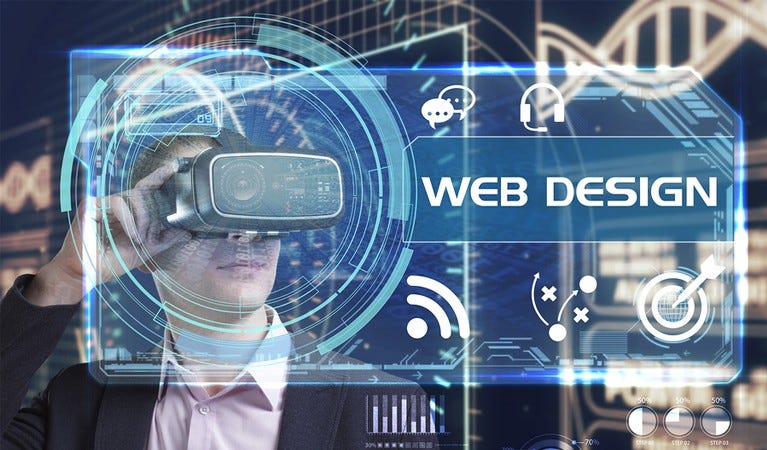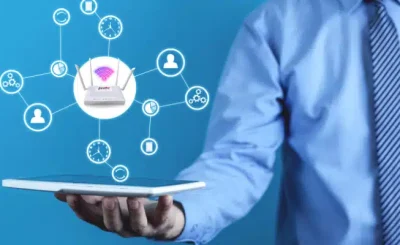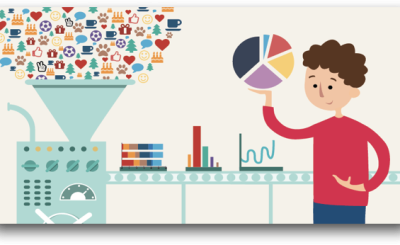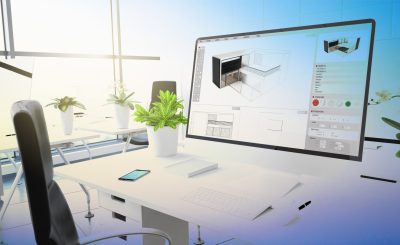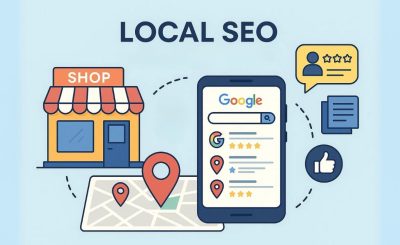Website design of websites is in a constant state of evolution, driven by changes in technology, user behavior, and aesthetic preferences. As businesses and individuals continue to rely more on digital platforms, the role of web design has become even more critical. It’s no longer just about creating visually appealing websites; it’s about crafting user experiences that are functional, accessible, and engaging across all devices.
In this article, we’ll explore the future of web design, focusing on emerging trends and technologies that are set to shape how websites are designed, developed, and experienced. From AI-driven design tools to immersive 3D interfaces, the future of web design is exciting and transformative.
1. AI-Driven Web Design: Automating Creativity
Artificial intelligence (AI) is making its mark on virtually every industry, and web design is no exception. AI-powered tools and platforms are becoming increasingly popular for automating parts of the web design process, allowing designers and developers to focus on more creative and strategic tasks.
AI in Web Design Tools
AI-driven design platforms, such as Wix’s ADI (Artificial Design Intelligence) or Firedrop, are capable of creating entire websites with minimal input from users. These tools can analyze the type of content, layout preferences, and business goals to generate a fully functional website in a matter of minutes. While this doesn’t replace human designers, it certainly speeds up the design process and can be particularly useful for small businesses or individuals who need quick and cost-effective web solutions.
Personalized User Experiences
AI can also be used to personalize the user experience on a website by analyzing user behavior in real-time. For example, AI algorithms can adjust content layout, product recommendations, or even the color scheme based on user preferences and interaction history. This level of personalization can lead to higher engagement rates and a more satisfying user experience.
Challenges and Opportunities
While AI-driven design offers numerous benefits, it also raises questions about the balance between automation and human creativity. Designers will need to find ways to work alongside AI to ensure that websites remain unique, personalized, and reflective of the brand identity.
2. Voice User Interface (VUI): Designing for the Voice Revolution
As smart speakers and voice-activated devices like Amazon Alexa, Google Assistant, and Apple Siri become more prevalent, voice search and voice commands are changing how people interact with the web. Designing for voice interactions is an entirely different challenge than designing for visual interfaces, and it’s a trend that web designers need to be aware of.
The Rise of Voice Search
With over 50% of all searches predicted to be voice searches by 2024, businesses must optimize their websites for voice search. This includes creating content that is conversational in nature, using natural language, and optimizing for long-tail keywords that reflect how people speak rather than how they type.
Voice-Activated Navigation
Voice commands are also becoming more integrated into website navigation. Imagine a user landing on a website and simply saying, “Show me the latest products,” or “Take me to the contact page,” and the website responding accordingly. Designing for these voice commands requires a different approach to user experience (UX) design, focusing on simplicity and clarity in how information is presented.
Designing for Accessibility
Voice interfaces also present an opportunity to make websites more accessible to users with disabilities. For example, users with visual impairments can navigate a website using voice commands, making it easier for them to interact with the digital world. Incorporating VUI into web design is not only a technological advancement but also a step toward creating more inclusive digital experiences.
3. Immersive Web Design with Augmented Reality (AR) and Virtual Reality (VR)
Augmented reality (AR) and virtual reality (VR) are no longer confined to gaming and entertainment. These immersive technologies are now making their way into web design, allowing users to interact with websites in entirely new ways.
AR in E-Commerce
In the eCommerce space, AR is being used to let users “try on” products before purchasing them. For example, beauty brands like Sephora allow customers to see how makeup products will look on their faces using AR through their websites and apps. Similarly, furniture retailers such as IKEA use AR to help customers visualize how a piece of furniture will look in their home before making a purchase.
VR for Immersive Experiences
Virtual reality, on the other hand, allows businesses to create fully immersive environments that users can explore. This is particularly useful for industries like real estate, where potential buyers can take virtual tours of properties without needing to visit in person. While VR is still in its early stages in terms of web design, it presents exciting opportunities for brands looking to create memorable and engaging user experiences.
The Future of Immersive Web Design
As AR and VR technologies become more accessible, web designers will need to adapt by learning how to integrate these experiences into websites effectively. This could mean creating immersive product displays, virtual tours, or interactive 3D interfaces that enhance user engagement and drive conversions.
4. Dark Mode and Low-Light Design: Beyond Aesthetic Trends
Dark mode has been one of the hottest design trends in recent years, with major platforms like Twitter, YouTube, and Facebook offering dark mode options to their users. This trend isn’t just about aesthetics; it’s also about improving the user experience, particularly for users who spend long periods looking at screens.
Why Dark Mode Matters
Dark mode reduces eye strain, especially in low-light environments, and can also help conserve battery life on mobile devices with OLED screens. As more users opt for dark mode settings, web designers must ensure their websites look just as good—and are just as functional—in dark mode as they do in light mode.
Designing for Dual Modes
Creating a website that offers both light and dark modes requires careful consideration of color palettes, contrast, and readability. Designers need to ensure that text remains legible, images look good, and user interactions are clear in both modes. This trend reflects the growing emphasis on user choice and flexibility in web design.
5. 3D Elements and Micro-Interactions: Enhancing User Engagement
Web design is becoming increasingly dynamic, with the use of 3D elements and micro-interactions helping to create more engaging and interactive experiences. These elements not only make a website look more modern but also contribute to better user engagement by making the website feel more responsive and alive.
3D Graphics and Visuals
The use of 3D graphics in web design is gaining traction, thanks to advances in browser technology and the increasing power of web development frameworks like Three.js. From product displays to interactive maps, 3D elements can add depth and realism to a website, making it more visually appealing and engaging for users.
Micro-Interactions for Better UX
Micro-interactions are small, subtle animations or design elements that respond to user actions. For example, a button that changes color when hovered over or a form field that provides real-time feedback are examples of micro-interactions. These tiny details can make a big difference in how users interact with a website, making the experience feel smoother and more intuitive.
Micro-interactions are especially useful for guiding users through tasks, such as filling out a form or completing a checkout process. By providing real-time feedback, they help users understand what actions to take next, reducing frustration and improving the overall UX.
6. Minimalism and Brutalism: Striking the Balance Between Simplicity and Boldness
Minimalism has been a dominant trend in web design for the past several years, with clean lines, ample white space, and a focus on essential elements. However, a counter-trend known as brutalism is also gaining traction, characterized by its raw, unpolished aesthetic, bold typography, and unconventional layouts.
The Appeal of Minimalism
Minimalist web design focuses on simplicity and functionality. By removing unnecessary elements, minimalist websites load faster, are easier to navigate, and provide a more focused user experience. This trend is particularly appealing to businesses that want to convey a sense of professionalism and clarity.
Brutalism: Bold and Unconventional
In contrast, brutalism is all about breaking the rules of traditional web design. It embraces a more chaotic and raw approach, often featuring stark typography, bold colors, and grid-defying layouts. While brutalist websites may not appeal to everyone, they can be incredibly effective for brands looking to make a strong, memorable statement.
Striking a Balance
As both minimalism and brutalism continue to evolve, web designers will need to find the right balance between simplicity and boldness. For some brands, a minimalist approach will be the best fit, while others may benefit from the unique, attention-grabbing style of brutalism.
7. Sustainability in Web Design: Eco-Friendly Websites
As awareness of environmental issues grows, sustainability is becoming an important consideration in web design. From reducing the carbon footprint of websites to optimizing performance for energy efficiency, sustainable web design is a trend that aligns with the growing demand for eco-friendly business practices.
Energy-Efficient Design
Websites require energy to load, and the larger and more complex a website is, the more energy it consumes. Sustainable web design focuses on minimizing the energy consumption of websites by optimizing images, reducing unnecessary scripts, and using efficient coding practices.
Green Hosting
In addition to optimizing the design of the website itself, businesses can choose to host their websites with green hosting providers. These hosting companies use renewable energy sources to power their data centers, helping to reduce the environmental impact of web hosting.
The Importance of Fast, Lightweight Websites
Not only is a lightweight website more sustainable, but it also provides a better user experience. Websites that load quickly and efficiently are more likely to retain visitors, reduce bounce rates, and improve SEO performance.


